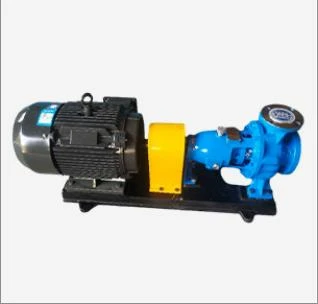Latin
- Afrikaans
- Albanian
- Amharic
- Arabic
- Armenian
- Azerbaijani
- Basque
- Belarusian
- Bengali
- Bosnian
- Bulgarian
- Catalan
- Cebuano
- Corsican
- Croatian
- Czech
- Danish
- Dutch
- English
- Esperanto
- Estonian
- Finnish
- French
- Frisian
- Galician
- Georgian
- German
- Greek
- Gujarati
- Haitian Creole
- hausa
- hawaiian
- Hebrew
- Hindi
- Miao
- Hungarian
- Icelandic
- igbo
- Indonesian
- irish
- Italian
- Japanese
- Javanese
- Kannada
- kazakh
- Khmer
- Rwandese
- Korean
- Kurdish
- Kyrgyz
- Lao
- Latin
- Latvian
- Lithuanian
- Luxembourgish
- Macedonian
- Malgashi
- Malay
- Malayalam
- Maltese
- Maori
- Marathi
- Mongolian
- Myanmar
- Nepali
- Norwegian
- Norwegian
- Occitan
- Pashto
- Persian
- Polish
- Portuguese
- Punjabi
- Romanian
- Russian
- Samoan
- Scottish Gaelic
- Serbian
- Sesotho
- Shona
- Sindhi
- Sinhala
- Slovak
- Slovenian
- Somali
- Spanish
- Sundanese
- Swahili
- Swedish
- Tagalog
- Tajik
- Tamil
- Tatar
- Telugu
- Thai
- Turkish
- Turkmen
- Ukrainian
- Urdu
- Uighur
- Uzbek
- Vietnamese
- Welsh
- Bantu
- Yiddish
- Yoruba
- Zulu
Telephone: +86 13120555503
Email: frank@cypump.com
Nov . 28, 2024 04:01 Back to list
Comparison of Single Suction and Double Suction Pump Performance and Design Features
Understanding the Difference Between Single Suction and Double Suction Pumps
Pumps are essential components in numerous industrial applications, effectively moving fluids from one location to another. Among the various types of pumps, single suction and double suction pumps are widely used, each having its distinct design, functionality, and applications. Understanding the differences between these two types of pumps is crucial for engineers, operators, and decision-makers in selecting the right pump for specific tasks.
Basic Definitions
Single suction pumps are designed such that fluid enters the impeller on one side only. The fluid is drawn in from one inlet and discharged from the opposite side. These pumps typically consist of a volute casing that helps in converting the kinetic energy of the fluid into pressure energy.
Conversely, double suction pumps have two inlets for fluid entry, allowing the fluid to enter the impeller on both sides simultaneously. This design enables these pumps to handle larger volumes of fluid with greater efficiency and reduced vibration. The impeller in a double suction pump is usually larger and has a more complex geometrical design compared to a single suction pump.
Design and Engineering Differences
The design differences between single suction and double suction pumps significantly affect their performance and suitability for different applications.
1. Impeller Design In single suction pumps, the impeller is typically more straightforward and smaller, designed to handle lower flow rates. In contrast, double suction pumps feature a larger and more complex impeller, allowing the pump to generate a higher flow rate while maintaining balance and reducing wear.
2. Vibration and Noise Levels Single suction pumps often operate with more vibration due to unbalanced fluid dynamics. This can lead to increased wear on the pump components. On the other hand, double suction pumps tend to experience less vibration because the fluid enters the impeller equally from both sides, resulting in a more balanced operation.
3. Size and Weight Double suction pumps are usually larger and heavier than single suction pumps due to their more complex and robust design. This means that they may require more space for installation and stronger structural support.
difference between single suction and double suction pump

Efficiency and Performance
When it comes to efficiency, double suction pumps generally outshine single suction pumps in applications requiring high flow rates and low NPSH (Net Positive Suction Head) requirements. The design of double suction pumps allows them to operate at lower speeds and produce higher capacities, making them ideal for large-scale applications like water supply, irrigation, and cooling systems in power plants.
However, single suction pumps are still highly effective for smaller applications, including residential water systems, smaller industrial processes, and situations requiring high head pressure at lower flow rates. They are typically more cost-effective and easier to maintain due to their simpler design.
Applications
The choice between single suction and double suction pumps ultimately depends on the specific application requirements.
- Single Suction Pumps Best suited for applications with moderate flow rates and higher heads, such as boiler feed, irrigation, and water supply systems. They are also commonly found in situations where space and budget are limited.
- Double Suction Pumps Ideal for large-scale industrial applications, municipal water systems, and processes that demand high flow rates at a lower head. Their design enables them to handle significant volumes of fluid while minimizing issues related to noise and vibration.
Conclusion
Both single suction and double suction pumps play crucial roles in fluid dynamics in various industries. Their design differences lead to variations in efficiency, performance, and suitable applications. Understanding these distinctions can significantly influence the decision-making process when selecting a pump for specific tasks. Whether choosing a single suction pump for its simplicity or a double suction pump for its capacity and balance, the key lies in matching the pump’s characteristics to the operational requirements. Ultimately, a thorough evaluation of the specific needs will ensure optimal performance and longevity of the pump system in question.
-
ISG Series Vertical Pipeline Pump- Chi Yuan Pumps Co., LTD.|High Efficiency&Compact Design
NewsAug.02,2025
-
Heavy-Duty Mining Sludge Pumps - Wear-Resistant Slurry Handling
NewsAug.02,2025
-
Horizontal Split Case Pump with GPT-4 Turbo | High Efficiency
NewsAug.01,2025
-
ISG Series Pipeline Pump - Chi Yuan Pumps | High Efficiency, Durable Design
NewsAug.01,2025
-
Advanced Flue Gas Desulfurization Pump with GPT-4 Turbo | Durable & Efficient
NewsJul.31,2025
-
ISG Series Vertical Pipeline Pump - Chi Yuan Pumps | Advanced Hydraulic Design&Durable Construction
NewsJul.31,2025










